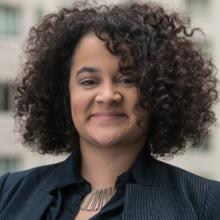How do we represent fear? Much of what we see in popular culture today focuses on this. From works by H. P. Lovecraft and Stephen King to shows like “Buffy the Vampire Slayer” and “American Horror Story,” it is evident that the symbols of fear are much more complex than just a killer in a ski mask with an axe in the woods or the chainsaw-wielding maniac in a secluded Southern town. Fear is psychological, often arising from our own personal demons.
“Penny Dreadful” is a British-American horror television series created by John Logan that brings various well-known horror tales together, like Mary Shelley’s Frankenstein and Bram Stoker’s Dracula. Throughout the show’s two seasons, we watch as the protagonists encounter various dangers: Sir Malcolm Murray (Timothy Dalton) fighting vampires in an effort to save his daughter, Mina (Olivia Llewellyn); Vanessa Ives (Eva Green) protecting herself from a coven of witches; Dr. Victor Frankenstein (Harry Treadaway) battling the Creature (Rory Kinnear), the monster he created and abandoned.
The show contains many of the traditional devices meant to elicit fear in viewers. There is the ominous music, composed by Abel Korzeniowski; the gloomy, foreboding streets of London, courtesy of the production designer Jonathan McKinstry; and the monsters, like the vampires and witches, created by the make-up effects and creature designer Nick Dudman. But we see the most poignant depictions of fear in the internal struggles of each character.
There is Vanessa Ives. Her fear is that she will allow herself to be seduced by the force that hunts her: the Devil. She learns that “when [the Devil] fell, he did not fall alone” and that he will pursue her “until the end of days.” We see the constant mental and physical harassment she faces. She knows she can make it all stop if she just gives in to the seduction and renounces her religion and power. There is a powerful scene in season two in which Vanessa kneels before a cross in her room. The candles around her go out as she continues praying with her eyes shut; as the camera frame widens, we see that as she prays, she is encircled by the three witches who have been hunting her. Despite her “complicated history with the Almighty” and the taunting of the witches, she continues praying.
There is the Creature, the disfigured monster brought back to life by Dr. Frankenstein. He is extremely self-conscious and is often shunned because of his physical deformities, which elicit fear in those around him. At times he expresses despair at having been brought back from the dead, stating, “I would rather be the corpse I was than the man I am.” In season two, the Creature takes a job working for Putney Family Waxworks but is eventually betrayed by the owner, Oscar Putney, who wishes to turn the Creature into a living freakshow. He ultimately escapes, killing Putney and his wife in the process, giving in to the violent tendencies he tried desperately to avoid.
There is also Ethan Talbot, whose greatest fear is of exposing his true self—a werewolf—to those around him; he fears losing control and hurting those he cares about. His struggle to repress the werewolf in him embodies the troubling and terrifying differences between interiority (the “I” who comments on our lives) and exteriority (the “selves” we wear at work, at home, throughout various social contexts).
And, finally, there is Victor Frankenstein. He rejects religion, stating that what he believes in is a place between heaven and hell. He describes this as a “glorious place with everlasting rebirth, perhaps even salvation.” This belief leads to an obsession with reversing death, a process that eventually leads to his conception of the Creature.
These characters symbolize what humanity often fears the most: loneliness, a loss of faith, fear of self and a loss of beauty. In humans, fear does not manifest itself only in physical monsters or demons. Rather, the answer to the question “What represents fear?” is often that which stares back at us in the mirror. We often fear what we are capable of (Ethan Talbot); we fear our faith being tested (Vanessa Ives); we fear loneliness (Frankenstein); and we fear not living up to the superficial physical expectations society creates for us (the Creature). “Penny Dreadful” demonstrates that quite often, what most terrifies us is what we have within ourselves, our very own humanity.








